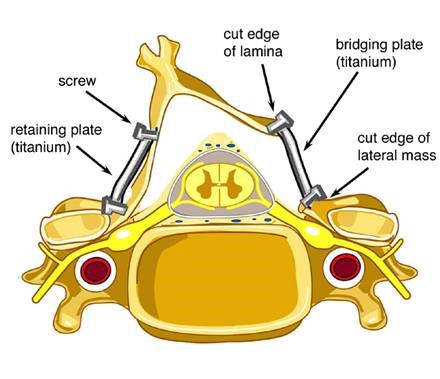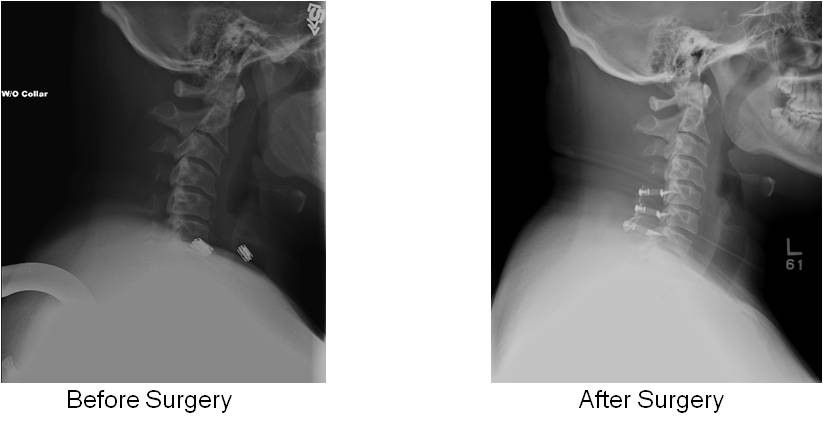Laminoplasty is a surgical procedure for treating narrowing of the spinal canal in the cervical spine (cervical stenosis) causing spinal cord compression (cervical myelopathy). The procedure involves cutting the lamina (roof of the spine) on both sides (completely cutting through one side and only cutting a groove on the other) and then “swinging” the freed flap of bone open, thus relieving the pressure on the spinal cord underneath. The bone flap is then propped open using a small metal plate such that the enlarged spinal canal remains in place.

Laminoplasty is designed to address multiple levels of spinal cord compression. Further, widening of the channel through which individual nerve root exits (called laminoforaminotomy) can be performed at the same time when there is additional nerve root involvement (cervical radiculopathy). Laminoplasty is a motion-preserving, non-fusion procedure and patients are generally encouraged to move their neck once the initial pain from surgery improves.
Laminoplasty is not for everyone. For example, patients with severe neck pain may not benefit from the procedure. Please consult with Dr. Cho to find out whether laminoplasty is the procedure of choice for your condition.
Case Presentation
The patient is a 35-year-old right-hand dominant chef who came to see Dr. Cho with arm pain, numbness and weakness. The strength in his hands has become so weak that he could no longer work as a chef. In addition, he has been having problems with balance whenever he tried to walk for the past six months. The patient came to see Dr. Cho using a cane.
Careful physical examination showed wasting of the muscles in his hands as well as signs of cervical myelopathy. Radiographic studies including x-rays, CT and MRI revealed congenital cervical stenosis (narrowing) causing severe spinal cord compression.
Given his symptoms, Dr. Cho recommended cervical laminoplasty, a motion-preserving procedure. The patient subsequently underwent a successful operation. Pain in his arms were immediately gone. His hand strength gradually returned, and the patient no longer required a cane while walking.

